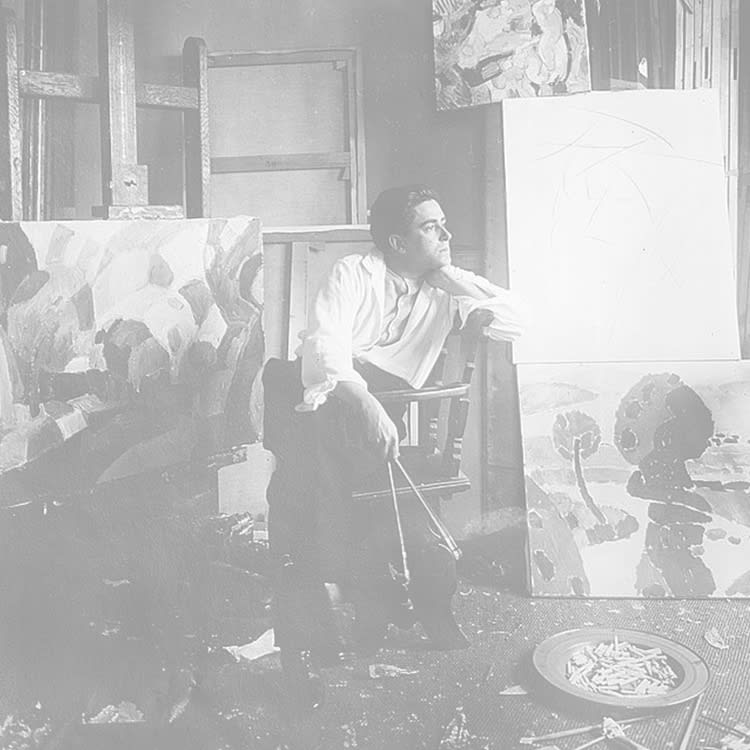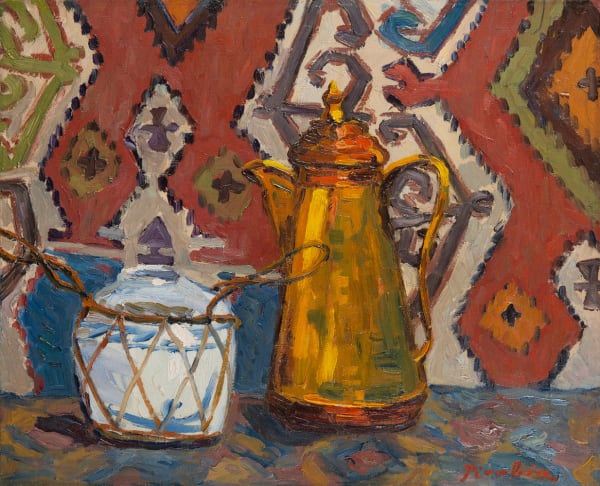FRANCIS PICABIA 1879-1953
Francis Picabia, born in 1879, was a painter who accompanied the great upheavals of the twentieth-century painting. At the age of 7, his mother died of tuberculosis, drawing and painting were then, for him, a refuge and a way to overcome his grief. « Between my head and my hand », he said in 1922, « there is always the image of death ».
In 1895 he began his apprenticeship at the Ecole des Beaux-Arts in Paris as well as the School of Decorative Arts where he met Braque and Marie Laurencin. It is only after 1902 that we can see the influence of Pissarro, and especially Sisley, in Picabia's paintings. This is when his Impressionist period started. He exhibited at the Salon d'Automne and the Salon des Indépendants, and at the avant-garde gallery of Berthe Weill. Success and fame were not far behind. Picabia's approach was consistent with the Symbolist-Synthesist concepts of the late nineteenth century : art was not considered as a reproduction of nature but rather as the emotional experience of the artist facing it, subjectively expressed in a synthesis of shapes and colours.
However, by gradually questioning the plastic values he earned his growing success and definitively broke with this Impressionist approach in 1908, after meeting Gabrielle Buffet, a young avant-garde musician, who would be his intellectual stimulus.
In 1909, he became interested in Cubism and Orphism. The work of Marcel Duchamp, in particular, impressed him. Together, in 1912 they created the Section d’Or group, an offshoot of Cubism. Picabia used his financial independence to lay the basis of his art and create his first abstract works, combining the colour intensity of Fauvism with the more muted tones of Cubism.
In 1913, he moved to New York where he participated in the Armory Show and defended European art. In 1916, he rallied to Dadaism and spread the movement with André Breton in Paris after meeting Tristan Tzara in Munich. However, in 1921, Picabia broke away from the movement in favour of Surrealism.
In the early 1940’s, Picabia settled in the South of France, and his work took yet another turn, he was now passionate for film and photography ; inspired by photographs in erotic magazines from the thirties, he produced a series of paintings of realism and supported a false academism.
After World War II, he came back to his childhood home in Paris. He returned to abstraction and wrote poetry until his death in 1953. Sometimes expressionist sometimes abstract, Francis Picabia embodies a free and non-conformist art in perpetual revolution.
Helene Bailly Gallery is pleased to participate in the sponsorship of the Catalogue Raisonné of Francis Picabia's paintings by the Picabia Committee and the Mercator Fund. The publication of the fourth and final volume (1940-1953) is scheduled for November 2022.

